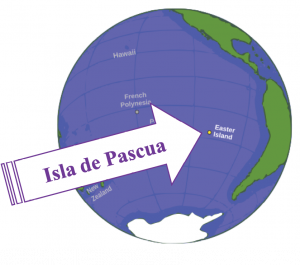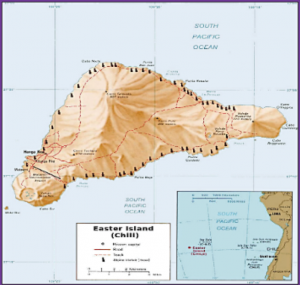Unidad 2: De compras y la ropa
9. ¡Aprendamos las preposiciones!
Apply prepositions for emphasis, possession, expressions and the “personal a.”
A preposition is a word that shows the relationship of one word to another word. These words usualy are nouns or pronouns. Prepositions normally indicate location, direction, time or date.
Paul is in his house → preposition of location
José goes to school → preposition of direction
On Mondays, we have class → preposition of date
She is meeting him at 4:30 today → preposition of time
You will have to memorize prepositions as vocabulary, but prepositions in all languages are very tricky because each language use prepositions differently. That is the reason why you need to pay special attention to their meaning and use. In Spanish we don’t use the same prepositions as in English. Some times Spanish requires a preposition but you don’t need it in English or vice versa.
As we studied before, a verb with a preposition or with a conjuntion has a specific meaning that changes if we use the verb without these:
Tengo que comprar la ropa para el invierno. → I have to buy clothes for winter.
Tengo dos chaquetas → I have two jackets.
Debo visitar a mi madre. → I must visit my mom.
Deben de ser las 10:00 am. → It must be 10:00 am.
Our recommendation is that when you learn a verb that is usually followed by a particular preposition or conjuntion, always study the verb with the preposition or conjuntion. In the following chart you will find some of the Spanish prepositions with their equivalents in English.
| Español | Inglés |
|---|---|
| a | to, at |
| ante | before, in the presence of |
| bajo | under |
| con | with |
| contra | against |
| de | of, from |
| desde | from, since |
| en | in, on, at |
| entre | between, among |
| hacia | until, toward |
| hasta | until, toward |
| para | for, in order to |
| por | for, by |
| según | according to |
| sin | without |
| sobre | about, on, upon, above, over, around |
| tras | after, behind |
The prepositions a, de, en, por, para have many English equivalents because their meaning varies according to the noun that follows. Unfortunately these are prepositions that we use very frequently. To help you to master the use of Spanish prepositions we will introduce you to some of the meanings and use. In subsequent courses we will delve deeper into the topic.
Be careful as prepositions are tricky and every language uses them differently. Pay attention to the following chart to some of the differences that you will find between the prepositions in English and Spanish. Remember, never translate an English verb + preposition with a word for word Spanish translation equivalent.
| Type | English | Español |
|---|---|---|
| Change of prepositions | To laugh at | Reirse de (of) |
| To consist of | Consistir en (in) | |
| Preposition vs no preposition | To look for | buscar |
| To look at | mirar | |
| No preposition vs preposition | To leave | Salir de |
| To enter | Entrar en |
Believe it or not, you already know some of the general rules that apply to Spanish prepositions. In the following sections you are only formalizing your knowledge.
1. One rule that you already know, as it applies with some of the structures that we already studied, is that when a verb immediately follows a preposition, it is always in the infinitive form.
“tener que + infinitivo”, “ deber de + infinitivo”, “ ir a + infinitivo”
Hoy después de hacer la tarea, voy a tomar un café.
Today, after doing the homework, I will drink a coffee.
Para dormirme tomo una taza de leche caliente.
In order to sleep, I drink a cup of hot milk.
Antonieta corre antes de bañarse.
Antonieta runs before bathing.
2. The second rule that you already know occurs when pronouns follow a preposition. The form of the pronouns is the same as subject pronouns, except for the forms corresponding to the first and second persons in the singular (yo and tú) which are mí and ti. Remember we studied this when you learned gustar and similar verbs:
A mí me gusta la ropa de Zara y a ti no te gusta la ropa de Carolina Herrera.
A ellos les gusta cantar y bailar, pero a ustedes no les gusta.
A vosotros os gusta probar los zapatos, a ellas no les gusta el estilo.
Remember “mí” (me) has a diacritical stress to differentiate it from “mi” the possesive adjective “my.”
This rule applies to all the prepositions not only to the personal “a”:
| Prepositions | |
|---|---|
| a | to, at |
| ante | before, in the presence of |
| bajo | under |
| con | with |
| contra | against |
| de | of, from |
| desde | from, since |
| en | in, on, at |
| entre | between, among |
| hacia | until, toward |
| hasta | until, toward |
| para | for, in order to |
| por | for, by |
| según | according to |
| sin | without |
| sobre | about, on, upon, above |
| tras | after, behind |
| Prepositional pronouns |
|---|
| mí |
| ti |
| él, ella, usted |
| nosotros/as |
| vosotros/as |
| ellos, ellas, ustedes |
Something new is how with the preposition “con”, the pronouns mí and ti become conmigo and contigo. Notice that conmigo is without stress, we don’t require the diacritical stress now. It follows the natural stress rules of a word ending in a vowel—emphasis on the second to last syllable.
¿Quieres ir conmigo al cine? Do you want to go with me to the movies?
¡Claro! tengo un boleto para ti. Of course, I have a ticket for you.
¿Hablas en serio?, ¿para mí? Are you serious? For me?
Sí, lo tengo para ti. Yes, I have one for you.
¿Vienes conmigo? Are you coming with me?
¡Claro que voy contigo! Of course, I am going with you!
3. As we already studied, some verbs such as necesitar, poder, preferir and querer may be directly followed by an infinitive, in other words, these verbs don’t require a preposition between them:
Necesito estudiar las preposiciones. I need to study the prepositions.
Puedo hablar más español de lo que pienso. I can speak more Spanish than I think.
Prefiero escribir español que japones. I prefer to write Spanish than Japanese.
Quiero ser bilingüe. I want to be bilingual.
4. You already know some of the structures formed by a verb + prepositions + infinitive. In the following chart we are introducing you to some verbs frequently used in Spanish that require a preposition. Pay attention, some of these verbs need to be followed by a place, a person or an infinitive.
| Verb | Verbo + preposición | Seguido por: | Ejempo: |
|---|---|---|---|
| To marry | Casarse con | persona | Me caso con Juan. |
| To fall in love with | Enamorarse de | persona | Se enamora de Margarita. |
| To attend | Asistir a | lugar | Nosotros asistimos a la ceremonia. |
| To enter | Entrar en/a | lugar | Entra en el cuarto, entra al cine. |
| To leave | Salir de | lugar | Salgo del restaurante.* |
| To learn | Aprender | + a + infinitivo | Aprendo a bailar. Aprendo español. (Neither the preposition nor the definite article is necessary before languages and aprender, enseñar, hablar, estudiar.) |
| To begin | Comenzar | + a + infinitivo | Comienzas a cocinar. Comienza la canción. |
| To begin | Empezar | + a + infinitivo | Empiezo a hacer la tarea. Empieza la novela. |
| To teach | Enseñar | + a + infinitivo | Enseño a escribir. Enseña español. |
* Remember the mantadory constraction: de + el = del a + el = al

A dictionary will usually give you the verb and the preposition that follows it when one is required.
a) La preposición A:
As we studied in the chart above the preposition “a” can mean “to or at”. But because the use of prepositions change in each language, we would like you to understand when you need to use the preposition “a” and consider it part of the expression rather than translate it literally. You already studied the following uses of the preposition a:
1. Structure ir + a:
- ir + a + infinitve
- Vamos a ir de compras.
- We are going to go shopping.
- ir + a + place
- Voy al centro comercial.
- I am going to the mall.
2. With the verb jugar a
- Ellos juegan al fútbol. (a+ el = al)
- They play soccer. (In English no preposition)
3. When we talk about time
- La comida es a las 3:00 de la tarde.
- The meal is at 3:00 PM.
4. To indicate direction
- Camino a la casa.
- I walk to the house.
5. Structure gustar
- A mí/ti/él/ella/etc…
- A Juan le gusta el chocolate.
- The chocolate is pleasing to Juan. (Juan likes the chocolate.)
Now we will study a new use of the preposition “a” à The personal a
The personal a is used when someone does an action to another person. In other words, we use the “a” when we have a person as the direct object. Remember the components of the sentence in the following example:
José Luis visita a Lupita .
Núcleo: visita
Sujeto: ¿Quién visita? José Luis
Complemento:
Objeto Indirecto: none
Objeto Directo: ¿A quién visita? A Lupita
The action is “visitar” and José Luis is visiting (is doing the action) to another person, in this case Lupita. We use the personal a à a Lupita. There is no literal translation in English for this. It is a structure to emphasize and point out the person receiving the action.
Now analyse the indirect complements of the following sentences:
- El marichi le canta una canción a Rosario.
- à ¿a quién canta? A Rosario. à proper noun
- Mariana le da una empanada a Juan.
- à ¿a quién da? A Juan. à proper noun
- Juan José mira a Laura.
- à ¿a quién mira? A Laura. à proper noun
- Roberto invita a Javier.
- à ¿a quién invita? A Javier. à proper noun
- El doctor revisa al paciente. (patient)
- à ¿a quién revisa? Al paciente. à a + el = al* à common noun
- Pablo le regala una flor a la profesora.
- à¿a quién regala? A la profesora. à common noun
*Note: When the preposition “a” immedately precedes the article “el” the contraction “al” is mandatory.
As you recall, we have two types of articles: definite and indefinite articles. In both cases the article always is placed before a noun. The agreement of gender and number of the article with the noun is crucial to keep in mind. In almost all the Spanish speaking countries, it is not polite to use an article with the proper name of a person. “Mira a la Juana” may be considered an insult. As in all languages we will find regional differences. In some regions in Spain, it is common to find the use of the articles as an expression of a close relation, for example: Yo amo a la Manuela.”
Perhaps you may have realized you have just studied sentences with direct and/or indirect objects. Of course all these sentences can take an indirect or direct object pronoun. Rewrite the sentences using pronouns and eliminate the actual indirect object or direct object.
| Indirect Object Pronouns | Direct Object Pronouns |
|---|---|
| me | me |
| te | te |
| le (se) | lo / la |
| nos | nos |
| os | os |
| les (se) | los / las |

Él canta una canción a Rosario.*_______________
Ella da una empanada a Juan. __________________
Juan mira a Laura._________________________
Él invita a Javier. __________________________
Ella lava a Lupita.__________________________
El doctor revisa al paciente.____________________
Ella lava el coche.___________________________
Él le regala una camisa a ella. ___________________
Ella quiere a su mamá._______________________
*Note: Él le canta una canción a Rosario vs. Él canta una canción a Rosario. When you are learning a language, you have to deal with correct grammar and vocabulary, but you also have to bear in mind its common usage. One main problem not only for Spanish learners but also for native speakers is the linguistic phenomenon known as “leísmo,” closely related to “loísmo, and laísmo”: they are variations from standard Spanish involving the third person object pronouns. In this moment of your studies we are not going to study this concept, but it is important that you understand that it is easy to find different opinions about the constructions of these sentences. For more information please visit Spanish Language Blog, Problems using la, le, lo (laísmo, leísmo, loísmo) Posted by Magda on Sep 15, 2011 in Spanish Grammar. Available http://blogs.transparent.com/spanish/problems-using-la-le-lo-laismo-leismo-loismo/

Practiquemos:
In the following story we are practicing the use of the preposition “a.” Remember the mandatory contraction in cases where the preposition “a” is followed by the article “the.” If the preposition “a” is not needed mark the space with an X.
_____Mary le encanta viajar por eso aceptó un trabajo en Paraguay. Va _____ser profesora de inglés. Ella espera poder viajar _____ los países cercanos, _____ ella quiere poder ir ____ Argentina.
¡_____Mary está muy sorprendida con Paraguay! El 99% de la población habla guaraní, lengua oficial y nacional, además del español. ____ ella le fascina la historia de Paraguay y siente un gran respeto por este país. Durante “La Guerra Grande” (1865 a 1870) contra Uruguay, Brasil y Argentina, Paraguay perdió el 85% de su población. El 15% que sobrevivió, en su gran mayoría mujeres, fueron las que reconstruyeron Paraguay.
Mary va ___ estar trabajando en una escuela trilingüe. En la escuela enseñan español y guaraní, pero también enseñan inglés. _____ los paraguayos están muy orgullosos de su condición bilingüe (guaraní y español) pero saben que el inglés es un idioma internacional fundamental en un mundo global.
La escuela tiene otros dos profesores de inglés, _____ Scarlet, una profesora australiana y ______ Sean un profesor británico. ¡______ Mary le encanta conocer ____ gente de otros países! Los tres están siendo muy buenos amigos. _____ ellos les gusta trabajar juntos.
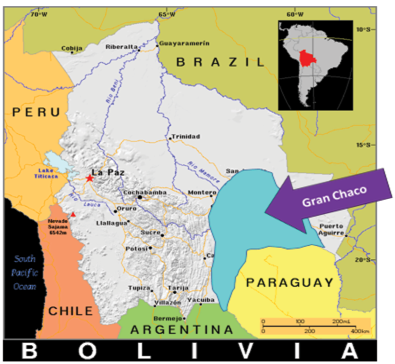 _____ Mary, Scarlet y Sean no enseñan ______ sus estudiantes solo inglés, ______ ellos les enseñan ______ costumbres y tradiciones en los Estados Unidos, Australia y el Reino Unido. ______ ellos creen en la empatía, no en la tolerancia de la diversidad. Creen que el conocimiento es lo que nos permite comprender ______ otros seres humanos y cuando comprendes ______ otros seres humanos, no necesitas tener que tolerarlos.
_____ Mary, Scarlet y Sean no enseñan ______ sus estudiantes solo inglés, ______ ellos les enseñan ______ costumbres y tradiciones en los Estados Unidos, Australia y el Reino Unido. ______ ellos creen en la empatía, no en la tolerancia de la diversidad. Creen que el conocimiento es lo que nos permite comprender ______ otros seres humanos y cuando comprendes ______ otros seres humanos, no necesitas tener que tolerarlos.
_______Mary tiene una amiga que se llama_____ Sofía._____ su amiga quiere ir ________ visitar el Chaco Paraguayo, una reserva ecológica impresionante._____ Mary va _____ tratar de terminar de calificar sus exámenes para poder ir. ______ Mary le interesan las colonias menonitas que viven en el Chaco desde 1920, es una experiencia que no puede perderse.
Keep in mind that other uses of the preposition “a” exist which you will learn in future lessons. In Spanish, there are several structures formed by a verb followed by a preposition “a” and often an infinitive. You need to learn them as you come across them. There is no reason as to which verbs are followed by a prepositions. Learn them as expressions. In the following chart you will find some examples:
Some verbs followed by the preposition “A”
| Español | Inglés |
|---|---|
| Ayudar a à Yo le* ayudo a mi hermano. | To help à I help my brother. |
| Asistir aà Ella asistea clases todos los días. | To attend à She attends classes every day. |
| Enseñar a à Yo les enseño a los chicos a leer. | To teach à I teach the boys how to read. |
| Volver a à Él vuelve a casa a las 10:00 en punto. | To return à He returns home at 10 o’clock. |
*Ayudar a, enseñar a are some of the verbs that we already studied that normally take the indirect object pronoun.
b) La preposición DE:
We already studied the verb tener to express possession:
-
- Tengo un coche.
- Beth tiene dos hijos.
- Juan tiene 20 años.
As we studied in the previous chart the preposition “de” can mean in English “of or from”.
In English we can express possession using the “ ’s”: Paco’s car. The equivalent of the “ ’s” in Spanish is the preposition “de.”
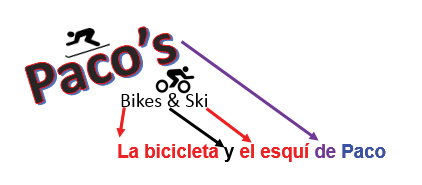
Let’s see some examples:
- ¿De quién es el libro? Whose book is it?
- El libro es de Paco. The book is Paco’s.
- Y ¿de quién son las novelas? Whose novels are these?
- Las novelas son de Paco también. The novels are Paco’s also.
Another usage of “de” is to express “origin”; from where the person, animal or thing comes.
- El libro es de Venezuela. The book is from Venezuela.
- ¿Paco es de Venezuela? Is Paco from Venezuela?
- No, Paco es de Lima, Perú. No, Paco is from Lima, Perú.
- ¡Mis abuelos son peruanos!* My grandparents are Peruvians!*
- ¿Son peruanos? Are they Peruvians?
*When we refer to a nationality, in English and Spanish, we don’t use a preposition (de or from). Don’t forget nationalities in Spanish always are in lowercase—the examples are in bold to help you recall.
- Sí, ellos llegan hoy de Lima. Yes! They arrive today from Lima.
- Mis abuelos tienen un corazón de oro. My grandparents have a heart of gold.
- ¿Quieres una taza de café? Do you want a cup of coffee.
- ¡Prefiero una taza de té! I prefer a cup of tea.
- ¡Necesito un descanso de 10 minutos! I need a 10 minute break !
In this last section did you notice how the use of the preposition “de” changes? In English, we use the preposition “of ” to show the characteristic of the person, animal or thing, including contents or what something is made of.
- La habitación de huéspedes = the guestroom
- Un coche de $10, 000.00 dólares = a $10, 000.00 car
- La casa de ladrillo = the brick house
- La mesa del (de el) té = the tea table
As we have The White House, the official residence of the President of the United States, Buenos Aires has the Pink House, which is the President’s house of Argentina.
- La Casa Rosada de Buenos Aires à The Buenos Aires Pink House.
- La Casa Blanca de Washington, D.C.à The Washington White House.
As you remember, there are several structures formed by a verb followed by a preposition “de” and then an infinitive. There is no reason as to which verbs are followed by a preposition. You need to learn them as expressions. In the following chart you will find some examples:
Some verbs followed by the preposition “DE”
| Español | Inglés |
|---|---|
| Acabar de à Acabo de comprar las prendas. | To have just done something; to just do something à I just bought the clothing. |
| Deber de à Deben de ser de algodón. | Must be à They must be made of cotton. (Indicates probability) |
| Salir de à Salgo de casa. | To leave à I leave home. |
| Acordarse* de à Me acuerdo de la cita. | To remember à I remember the appointment. |
| Alegrarse* de à Nos alegramos de estar aquí. | To be glad à We are glad to be here. |
| Enamorarse de à Él se enamora de Shakira. | To fall in love with à He falls in love with Shakira. |
| Disfrutar de à Pedro disfruta de sus vacaciones. | To enjoy à Pedro enjoys his vacations. |

*the verbs that have “se” attached to the infinitive are reflexive verbs.
We studied that when the preposition “a” immedately precedes the article el, the contraction “al” is mandatory. The preposition “de” has the same rule. When “de” is followed by the article el, meaning “the,” they form the contraction “del.” Remember, the personal pronoun “he = él” has a diacritical stress to distinguish it from the article “el.” The rule above applies only for the article el, never for the personal pronoun él.
- Las flores del (de el) bosque à The flowers of the forest
- Vs. Las flores de él à His flowers
You will occasionally see other uses of de, although those above are the most common. There are also many expressions and verb combinations using de that were not listed above. For now, we will practice the uses that we just studied in the following reading. As we learn about Isla de Pascua, an island belonging to Chile that is located in “Oceanía” (in Latin culture this refers to the continent of Australia.)
Use the preposition “a,” “de,” or their contractions as needed. Write an “X” if the preposition is not needed. Don’t forget to apply the contraction when you see: “a+ el = al or del = de.”

La Isla de Pascua
La Isla _______ Pascua está ubicada en la Polinesia en medio _____el Océano Pacífico, la Isla ______ Pascua es uno ________ los mayores atractivos turísticos ________ Chile, con sus playas ______ arenas suaves y aguas color azul turquesa, volcanes dormidos con fabulosas lagunas (lagoons) interiores, y la enigmática cultura maorí (cultura pre-hispánica o pre-colombina) que existe ______la isla. Cada año llegan _______ docenas (dozens) __________ miles de visitantes que buscan disfrutar (enjoy) y explorar esta fantástica isla.
Los turistas visitan la isla__________ principalmente en verano, época que se caracteriza por la falta de lluvia y ________las altas temperaturas, produciendo escasez (shortage) ________ agua _______riego (irrigation) para______ la agricultura (farming). Es así que la isla tiene el 52% ______ las frutas y verduras que necesita anualmente ______ el continente. “Los agricultores (farmers) _________ la zona deben ________ reducir su producción o recurrir ______el agua potable (drinkable) para regar (to water) durante estos meses, por lo que el precio ______sus productos son muy caros (pricey) ______ comparación _______ los productos ______ el continente”, explica Carolina Cuevas, la jefa del proyecto _______ Sustentabilidad ______ la Fundación Chile que, junto con el apoyo de actores locales, busca generar agua _________ riego mediante tecnologías ___________energía solar.
La primera fase _______el proyecto fue(was) todo un éxito (success), pues una pequeña planta desaladora (desalination) _______ agua ________ mar diseñada para las condiciones propias __________ la Isla de Pascua está trabajando. *
*Adaptación del artículo original disponible en https://www.df.cl/noticias/tendencias/isla-de-pascua-busca-regar-cultivos-utilizando-energia-solar/2015-11-17/133204.html
c) La preposición EN:
“En” means “in, on or at.” But “en” can also be translated as “about,” “by,” “on top of,” “upon,” “inside of” and other ways, so its use isn’t as simple as it may appear. Don’t worry we will study some uses of the preposition “en” and with practice and time you will be able to use other ones. The great news, is that the correct use of the preposition “en” is very simple for English speakers that are learning Spanish.
There are some verbs that need the preposition “en.” For certain verbs “en” will mean “in” with others “on.”
Let’s learn some examples “en”:
- Concentrarse en = To concentrate on
- Confiar en = To trust in
- Insistir en = To insist on
- Reflejar en = To reflect on
- Resultar en = To result in
Examine the following visual organizer and some examples in English to Spanish:
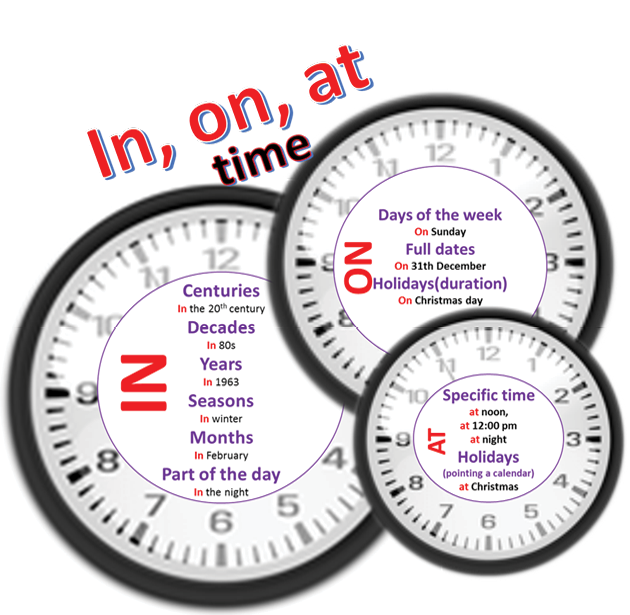
The book is on the table. à El libro está en la mesa.
María is in Panama. à María está en Panamá.
I arrive in one hour. à Llego en una hora.
She puts the pictures on the wall. à Ella pone las fotografías en la pared.
I go to the movies at night. à Voy al cine en la noche.
At Christmas I always cook. à En navidad siempre cocino.
One difference that you need to remember is that Spanish doesn’t use the preposition “en” with the days of the week. Spanish will use the article “el” (singular to specify one day) or “los” (plural to talk about all the days).
We work on Monday. à Nosotros trabajamos el lunes.
She takes Spanish on Mondays. à Ella toma español los lunes.

The names of the weekdays in Spanish are always spelled as if they were plural: lunes, martes, miércoles, jueves y viernes. The days of the weekends are singular or plural: sábado – sábados, domingo – domingos.
Another meaning for “en” is “by” to express how an object or person is transported.
They are traveling by plane. à Ellos están viajando en avión.
My sister comes by bus. à Mi hermana viene en autobús.

Practiquemos:
Complete the following sentences with the correct preposition “en, a, con or de”. Remember the mandatory contractions with the prepositions “a” and “de” with the article “el” when applicable.
- Voy _____ comprar el libro ______ Mario Benedetti.
- Mañana voy ______ comer ______ el restaurante Botín _____ Madrid.
- Yo salgo ______ bailar _______ mi novio ______ frecuencia.
- Estudio ______ SUNY Geneseo_______ (tú—with you).
- La clase ______ español me encanta; pero la clase _____ literatura moderna no me gusta.
- Normalmente estudio ________ la biblioteca, no me gusta estudiar ______ mi dormitorio.
- Conozco _____ mi profesor _______ biología muy bien.
- _____ Juan y ______ Pedro les falta estudiar para la clase _______ química.
- Rosario le da el trabajo ______ el profesor antes _____ la clase.
- Estoy aprendiendo _________ escribir ______ la clase de expresión escrita.
- Empiezo ________ entender los diálogos que leo ______ mi compañero.
- El profesor nos enseña ________ utilizar la fonética española.
- Asisto _______ las actividades culturales para practicar mi español.
- Blanca Rosa va _____ ir ______ el* cine _______ (yo—with me) ______ la noche.
*Remember the contraction.
d) Las preposiciones POR y PARA:
Some of the most difficult concepts to learn are when we have two words in Spanish that mean the same word in English or viceversa. We already studied the verb to be as ser or estar and the verb to know as saber or conocer. Also we studied the preposition en has different meanings in English: in, on or at. Now we are going to study the prepositions por and para which mean for in English. As we did before, the best way to differentiate between por and para is to know the specific ways in which they should be used.
Remember the general rule for the prepositions: verbs that directly follow a preposition, por or para in this case, must be in the infinitive. With this in mind, review the following chart with some of the uses of por and para. Later on, we will review other uses.
| Usos de para | Ejemplos |
|---|---|
| To indicate purpose (in order to) | ¿Para qué es eso? |
| Es para comer. | |
| ¿Para qué quieres estudiar? | |
| Para tener buenas notas. | |
| To indicate direction toward a destination | Voy para la clase de español. |
| El avión va para Costa Rica. | |
| To express deadline | La tarea es para mañana. |
| To indicate the recipient of a thing or an action | El regalo es para mi mamá |
| La tarea es para el profesor. |
| Usos de por | Ejemplos |
|---|---|
| To express duration of an action. You can use durante instead or just the period of time |
Voy a estar en Geneseo por 4 años. |
| Voy a estar en Geneseo durante 4 años. | |
| Voy a estar en Geneseo 4 años. | |
| To express a general time period | Visito a mi madre por Navidad. |
| Estudio por la mañana y trabajo por la tarde. |
While you master the different uses for por and para, we would like to share with you a little “trick.” It is not a rule, it is just a “trick”:
Always use “por” when you are talking about time, except when you are talking about deadline, use “para.”

Practiquemos:
Answer the following questions in complete sentences.
- ¿Cuándo prefieres estudiar? _____________________
- ¿Cuánto tiempo por semana haces ejercicio? __________________
- ¿Cuándo visitas a tus padres? ________________________
- ¿Cuánto tiempo estudias español por la semana? _________________
- ¿Para qué tenemos que leer el libro del Quijote? _________________
- ¿Por qué trabajas mientras estudias? __________________
- ¿A dónde vas a correr? ____________________
- ¿Para qué usas Google? ______________________
- ¿Cuándo sales con tus amigos?________________________
- ¿Cuánto tiempo vas a estar con tus padres en el verano? _____________
You have already learned some uses of the prepositions por and para. In the following chart, you will find the uses that you already know for por and para in a graphic representation and also some new uses.

Observa los apuntes (2.2.4) about all the prepositions we have studied along with the graphic below to note other differences between por and para.
DETRACT IT à Por
- Duration
- Exchange
- Through a place, along
- Reason
- Author
- Cost
- Thanks
- In place of
- Transportation mode
PERFECT à Para
- Purpose (in order to) w/verb infinitive
- Effect something has on something else
- Recipient
- Future dates, events, deadlines
- Employment
- Comparison
- Toward a specific place
PARA
| USE | DEFINED AS | EXAMPLES |
|---|---|---|
| Purpose/Goal | To/In order to | Para bailar la bamba… |
| Voy a estudiar mucho para ser doctora de medicina. | ||
| Employer | For | Trabajo para SUNY. |
| Recipient(s)/ Intended person | For | Compro la camisa para mi madre. |
| Future date/deadline | For | El ensayo es para el lunes. |
| Effect | For | Estudia para doctor. |
| Comparison(s) | For | Para un niño de 5 años, lee muy bien. |
| Toward a specific place/final destination | For | Salgo para Nueva York. |
POR
| USE | DEFINED AS | EXAMPLES |
|---|---|---|
| Duration/general time period | During/for | Como por tres horas por la mañana. |
| Exchange | In exchange for | Trabaja por 10 dólares. |
| Through a place/movement/location | Through/along/past/around | Conduce por Geneseo. |
| Reason/motive | On account of/because of/for | Porque me gusta. |
| Author/means | By/means/by means of | Viajo por barco. |
| Cost | For | Paga 2 dólares por una camiseta. |
| Thanks | For | Gracias por la comida. |
POR vs PARA

In the following table you will find different sentences using the prepositions por and para. You need to write the reason why the sentences use por or para. The graphic above and your previous knowledge will help you understand the reason.
| Oraciónes con por o para | Razón del uso de por o para |
|---|---|
| 1. El pastel se hornea (bake) por 35 minutos. |
Duración, puedo usar durante o el periodo de tiempo. |
| 2. Ella corre por las mañanas. | |
| 3. La tarea es para mañana. | |
| 4. El coche va a mucha velocidad por la calle. | |
| 5. Tienes que cruzar (cross) por Main Street. | |
| 6. Voy a pasar por mi casa antes de ir al cine. | |
| 7. Salgo para la clase a las 4:00 en punto. | |
| 8. Viaja a Madrid por avión. | |
| 9. Viaja a Madrid para estudiar español. | |
| 10. Te cambio mi chocolate por tu galleta. | |
| 11. La tarjeta es para mi novio. | |
| 12. A Messi le duele el pie. Juan va a jugar por Messi. | |
| 13. Messi y Juan José juegan para el Barcelona. | |
| 14. Para mí, el Barcelona es el mejor equipo de fútbol. | |
| 15. Estudio para ser doctor y mi hermana para abogada. | |
| 16. Pasa por la cafetería y cómprame un café. | |
| 17. Para ella, SUNY Geneseo es una gran universidad. |

Using the web site 2.2.5 verbos-que-exigen-preposiciones below, write the meaning below each verb expression for each of the Spanish grammatical structures. If you cannot find a definition, remember to use your resources such as Wordreference.com.
a
- acercarse a: ___________
- acostumbrarse a: ___________
- aprender a: ___________
- asistir a: ___________
- ayudar a: ___________
- comenzar a: ___________
- decidirse a: ___________
- correr a: ___________
- empezar a: ___________
- invitar a: ___________
- enseñar a: ___________
- ir a: ___________
- jugar a: ___________
- volver a: ___________
con
- casarse con: ___________
- contar con: ___________
- divertirse con: ___________
- estar de acuerdo con: ___________
de
- acabar de: ___________
- acordarse de: ___________
- alegrarse de: ___________
- cansarse de: ___________
- dejar de: ___________
- disfrutar de: ___________
- dudar de: ___________
- enamorarse de: ___________
- olvidarse de: ___________
- quejarse de: ___________
- salir de: ___________
- tratar de: ___________
en
- confiar en: ___________
- divertirse en: ___________
- entrar en: ___________
- insistir en: ___________
- pensar en: ___________
Nuestra última estructura gramatical es con la preposición PORà escribe su significado:
por
- preocuparse por: ___________

¡Practiquemos!
Apply the correct prepositions (a, de, en, por, para, con, sin) and where applicable, the contractions to the story below about Carolina Herrera, a fashion designer from Venezuela. You will use some of the grammatical structures studied above. With the exercise below, it is helpful to use your strategies to read for word recognition and then re-read for comprehension or the general idea before filling in the missing words.
Remember when the prepositions “a” or “de” precede the article “el” that we need to make a contraction a + el = al; de + el = del. The only exception to this contraction rule is when referring to a proper name such as the newspaper “El País.” We would say, “The news is from El País à Las noticias son de El País.”
Apply the correct prepositions (a, de, en, por, para, con, sin) and again, use contractions when applicable.
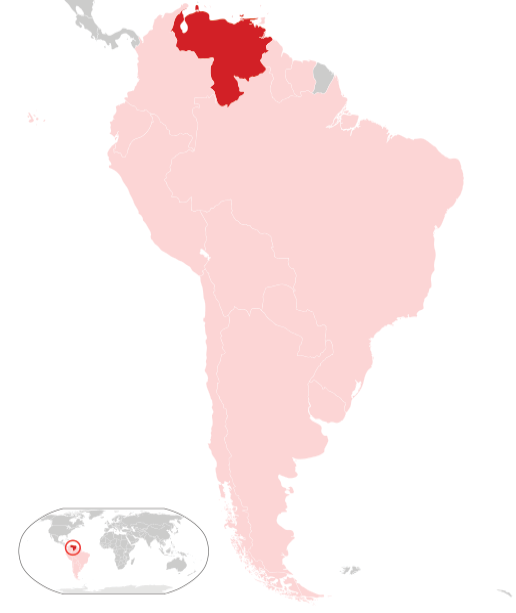
Vamos _________ Venezuela _________ visitar ________ mi amiga, Carolina Herrera. Carolina es ________Venezuela pero ahora pasa tiempo _________ NY. Le gusta viajar ________ todas partes _______ Europa.
Ahora Carolina está explicando un poco sobre Venezuela.
Soy _________ Caracas, la capital _________ Venezuela. Mi país limita (borders) ________ Colombia, Guyana y Brasil. _________ (to the) norte, tenemos el mar Caribe. Durante la mayor parte ______ (of the) año, disfrutamos _________ buenas temperaturas pero tenemos unos periodos _______ muchas lluvias_______ fuertes tormentas. _______ mí me gusta el clima de Venezuela.
_______ años recientes uno ________ los productos más importantes es el petróleo pero Venezuela tiene otras riquezas también. Tenemos mucha variedad territorial. El país cuenta _________ montañas y
llanos (plains) y ________ eso (for this reason), tenemos muchos productos agrícolas. Hoy _______ día, tenemos problemas políticos y me preocupo __________ mi gente.
Yo: “¿Carolina, empleas _________ mucha gente en tus fábricas de ropa?”
Carolina: Sí, vas _______ venir ____________ (with me), ________ (in order to) ver mi fábrica. Producimos ropa ________ buena calidad y ________ gran estilo. ____las mujeres famosas como Jaqueline Kennedy y _________ otras celebridades, les encantan los vestidos elegantes. Es la marca _______ mi ropa. Ahora como soy ciudadana (citizen) _______ los Estados Unidos, veo la necesidad _______ crear ropa ________ otras personas, abrimos otra fábrica. ___________ (in order to) seguir _______ (in) el mercado, hay que diversificarse. Es un poco diferente _______ los Estados Unidos. La gente en general _________ o __________ (with or without) dinero quiere mucha ropa pero muchas veces es ______ baja calidad. Al contrario, en los países hispanos, ______ las personas les importa tener pocas piezas pero de buena calidad. Estoy muy agradecida (grateful) _______ mi mamá porque ella siempre me mostraba la moda y el estilo clásico. Bueno, vamos ________ conocer ________ unos amigos míos y ___________ tomar algo.
Yo: Gracias Carolina __________ mostrarme todo. No sé que haría ________ ti. (I don’t know what I would do without you.)
Carolina: ______ nada. Siempre es un placer ver _______ una buena amiga.
Another strategy to help you master the prepositions is to write the reason above them as to why you chose the answer. “Personal a” does not have a translation in English so often times that is the one to practice the most. In the previous notes on prepositions, the “personal a” was noted. Remember, if there are names or references to people as part of the predicate (after the verb), you need to “announce them” with the personal a. Visito a mi abuela. Doy a mi hermano un regalo.
Pay attention to when the “personal a” is used and when it is not used such as after expressions with tener. Esperamos que seas un experto de las preposiciones para pasar al próximo tema.



